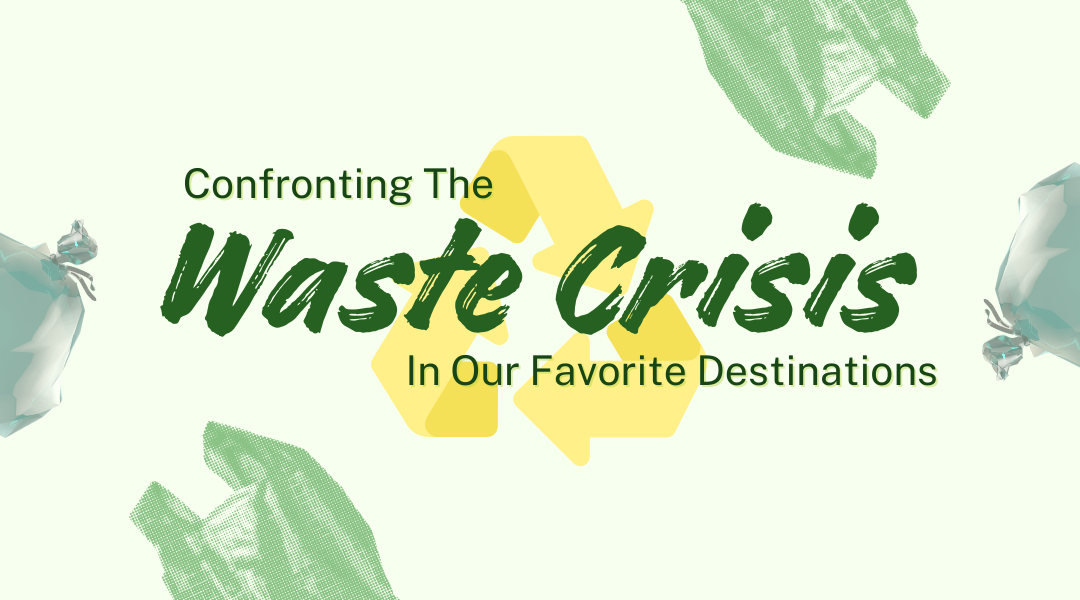We’ve all seen the postcard-perfect images: sparkling azure waters, pristine sandy beaches, and ancient, bustling city centers. But lurking just outside the frame of our vacation photos is a growing, less picturesque reality—a tidal wave of waste threatening to overwhelm the world’s most beloved tourist spots. The very infrastructure designed for a local population is buckling under the seasonal surge of visitors, creating an environmental crisis that can no longer be ignored.
This isn’t merely an issue of litter; it’s a complex problem born from a collision of consumer culture, transient populations, and strained local resources. Understanding the depth of this challenge is the first step toward forging a more sustainable path for global travel.
The Anatomy of a Tourist-Generated Waste Stream
The problem begins with sheer volume. A city like Barcelona or a small island like Boracay can see its population double or triple during peak season, with each visitor generating significantly more waste than a resident. This isn’t just about a few extra bins; it’s a fundamental overload of the entire waste management system.
- The Single-Use Onslaught: Tourist economies are built on convenience. Think of the miniature shampoo bottles in hotel rooms, the plastic-wrapped pastries at breakfast buffets, the disposable ponchos sold at monuments, and the endless stream of single-use water bottles. This creates a low-density, mixed-material waste stream that is notoriously difficult and expensive to manage.
- The “Vacation Mindset” and its Consequences: When people are on holiday, their usual diligence about recycling and waste reduction often goes out the window. The “someone else will clean it up” mentality, combined with confusion over local recycling rules in a foreign language, leads to contaminated recycling streams and litter that finds its way into natural environments. A plastic bag discarded in a medieval European square can easily end up choking marine life in a distant sea.
Beyond the Landfill: Innovative Solutions in Action
Tackling this crisis requires moving beyond simple awareness campaigns to deploy smart, context-specific strategies that engage both the industry and the visitor.
1. Designing Out Waste at the Source
The most effective waste is the waste that is never created. Forward-thinking destinations are moving beyond just managing trash and are actively redesigning the tourist experience to eliminate it.
- The “Refill Revolution”: In an effort to combat the millions of plastic bottles plaguing its islands, Greece has launched a nationwide network of water refill stations in ports, airports, and public squares. Similarly, the “Refill My Bottle” app allows travelers in places like Bali and Vietnam to easily find cafes and businesses that offer free tap water refills.
- Circular Systems for Hospitality: Hotels are reimagining their supply chains. Instead of individual condiment packets, they are installing bulk dispensers. They are partnering with local breweries to serve beer on tap rather than in bottles and with farms to source food with minimal packaging. This not only cuts waste but also strengthens ties to the local economy.
2. Deploying Smarter Infrastructure and Technology
For the waste that is generated, innovation is key to handling it efficiently and sustainably.
- Waste-to-Resource Facilities: Instead of shipping trash to a distant landfill, places with high organic waste from restaurants and hotels are investing in anaerobic digesters. These systems break down food waste in the absence of oxygen, capturing the methane to generate electricity and producing a nutrient-rich digestate that can be used as agricultural fertilizer.
- AI-Powered Sorting: In destinations like Japan and Singapore, advanced recycling facilities use artificial intelligence and optical scanners to sort materials with a precision far beyond human capability. This dramatically improves the quality and value of recycled materials, making recycling programs more economically viable.
3. Fostering a Culture of Shared Responsibility
Technology and infrastructure are useless without a fundamental shift in behavior from all stakeholders.
- Engaging Tourists as Part of the Solution: Rather than scolding visitors, the most successful programs invite them to participate. “Carry-in, carry-out” policies in sensitive natural parks, or initiatives like “1% for the Planet,” where businesses donate a portion of their revenue to local clean-up crews, make the tourist an active partner in conservation.
- Empowering Local Leadership: Lasting change is locally led. When municipalities invest in robust, clear public recycling systems and when local guides proudly explain the destination’s conservation efforts, it creates a powerful feedback loop. A fisher in the Philippines who now makes a living running plastic-free island tours has a vested interest in keeping the waters clean, becoming a more effective ambassador than any billboard.
Conclusion: From Points of Crisis to Beacons of Change
The waste crisis in our global playgrounds is a stark reminder of tourism’s footprint. Yet, within this challenge lies an extraordinary opportunity. These hotspots, by virtue of their global visibility and economic clout, have the potential to become living laboratories for a circular economy.
The path forward isn’t about stopping travel, but about evolving it. It demands that we reimagine our role from being passive consumers of a destination to being active, respectful participants in its ecosystem. By championing businesses that innovate, demanding smarter policies, and embracing our own responsibility, we can help ensure that the world’s most beautiful places don’t just survive the age of mass tourism, but emerge as healthier, more resilient, and more inspiring than ever before. The true legacy of our travels should be a positive imprint, not a pile of trash.
